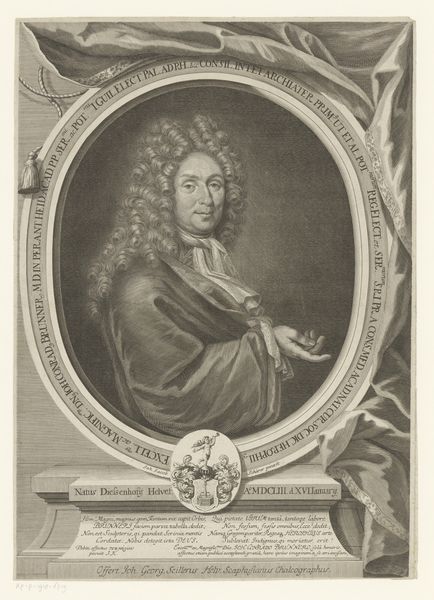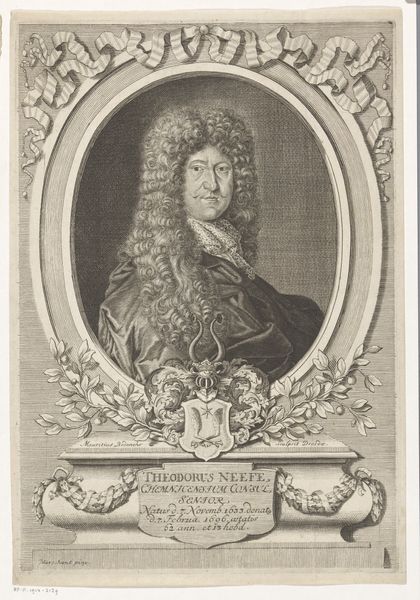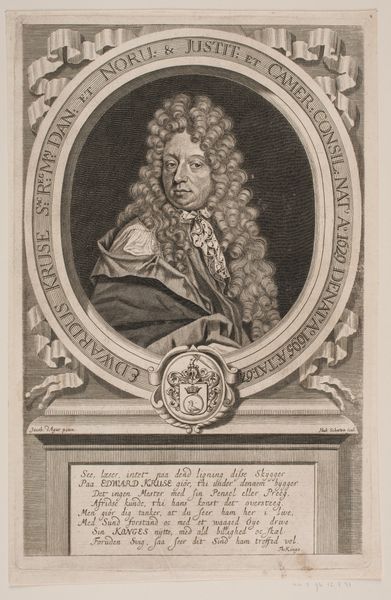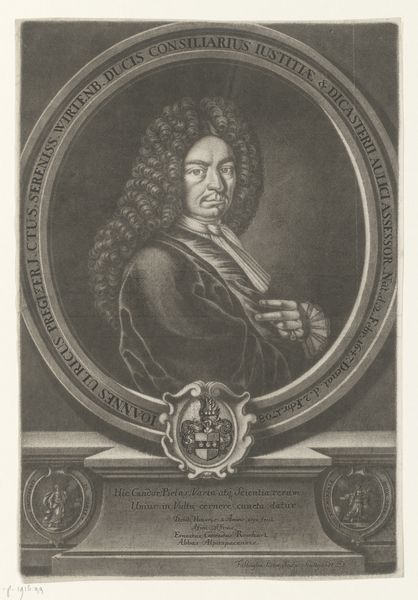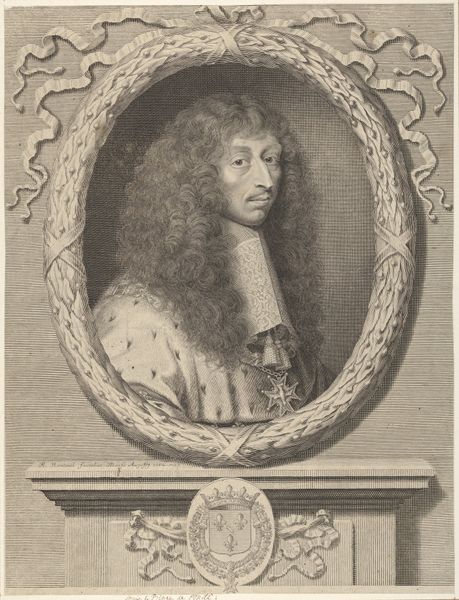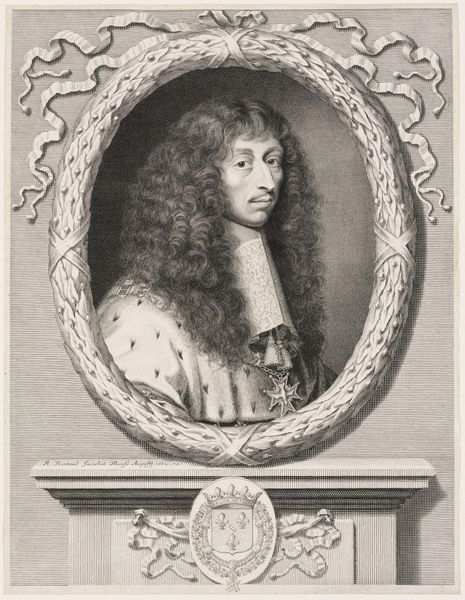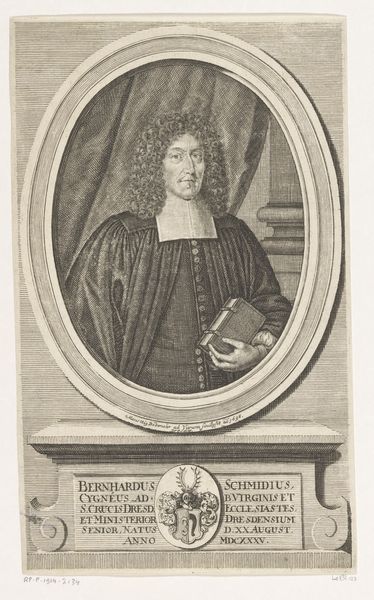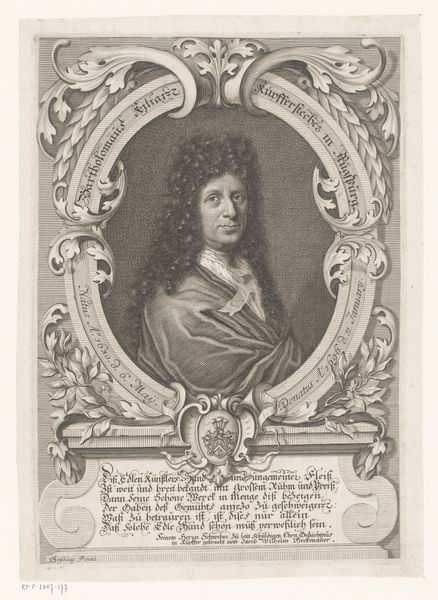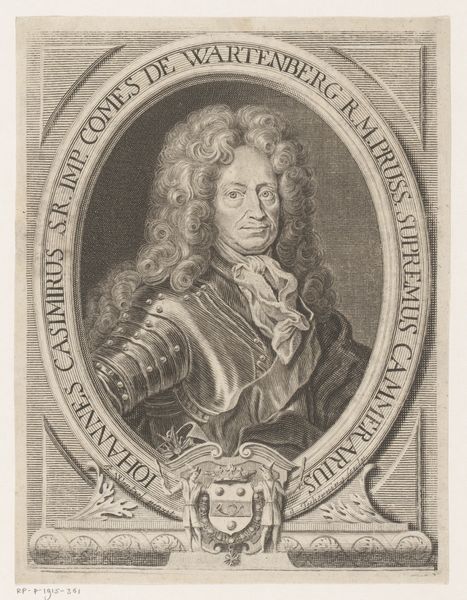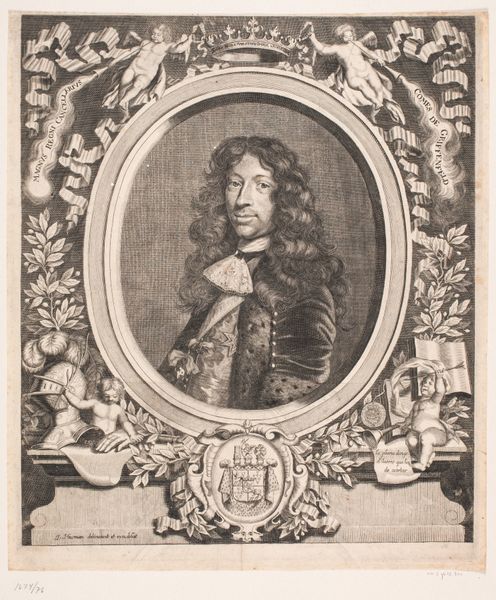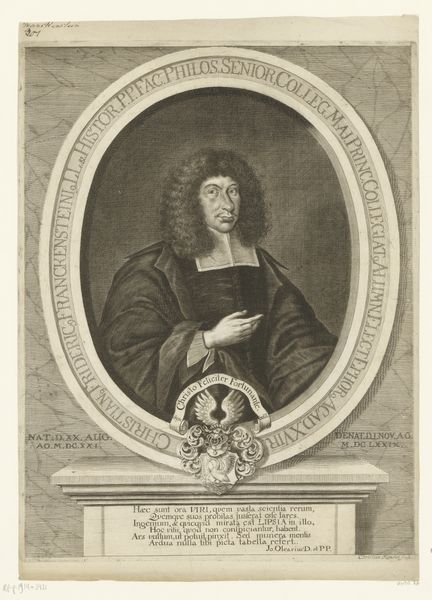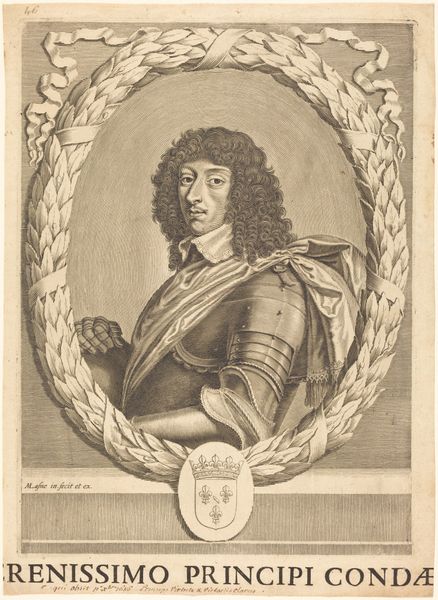
print, engraving
#
portrait
#
baroque
# print
#
engraving
Dimensions: 339 mm (height) x 248 mm (width) (bladmaal)
Editor: Here we have Hubert Schaten's engraving, "Peder Hansen Resen," created in 1684. It's a formal portrait, and I'm struck by the textures, especially the swirling lines that make up the wig and the draped fabric. What catches your eye when you look at this piece? Curator: The engraving showcases a remarkable command of line. Note how the density and direction of the etched lines define form, create tonal variation, and articulate texture. Consider the interplay between the tight, controlled lines that delineate Resen’s face and the more fluid, almost baroque flourishes of his wig and drapery. What kind of effect does that have on you, seeing this contrast? Editor: It creates a visual hierarchy. My eye is drawn to the face first, because of that clarity, but then the wig and clothing become more interesting the longer I look. Curator: Precisely. Also, look at the use of the oval frame and the inscription surrounding the portrait. The text itself becomes a visual element, adding another layer of complexity to the composition. Does the use of text as image change how you perceive the portrait itself? Editor: I think it does. It becomes more than just an image of a person; it’s also a declaration, like an official document. The ornate frame almost reinforces the wig and drapes, setting him up as something worth adorning and celebrating. I guess that’s what they intended. Curator: A useful observation! It calls our attention to the artistry inherent within the symbolic representation, how even something ostensibly descriptive—a portrait—can be richly communicative about both its subject and its purpose. Editor: I see how examining the elements like line, shape, and composition allows us to read this piece more deeply, not just as a picture of someone from the past, but as an interesting construction itself. Curator: Absolutely, understanding the formal language allows for a richer interpretive experience of even the most seemingly straightforward of images.
Comments
No comments
Be the first to comment and join the conversation on the ultimate creative platform.
